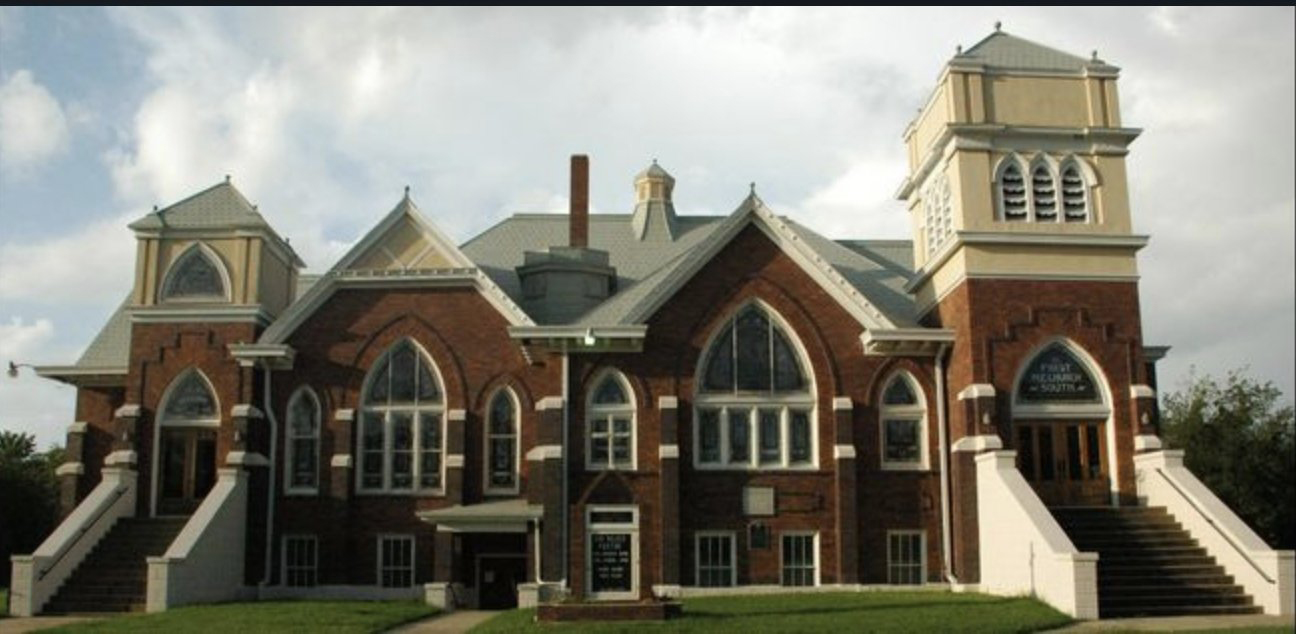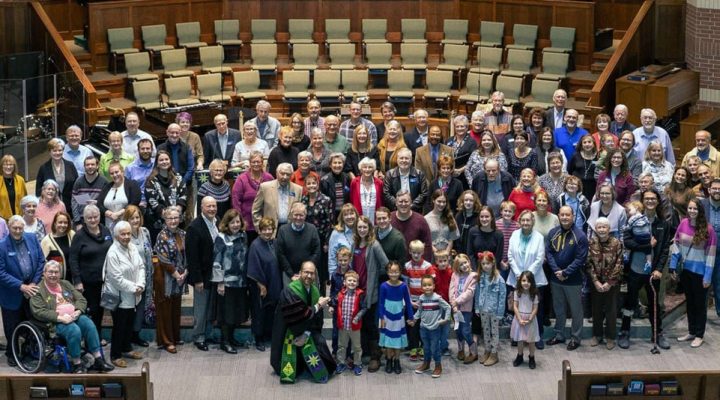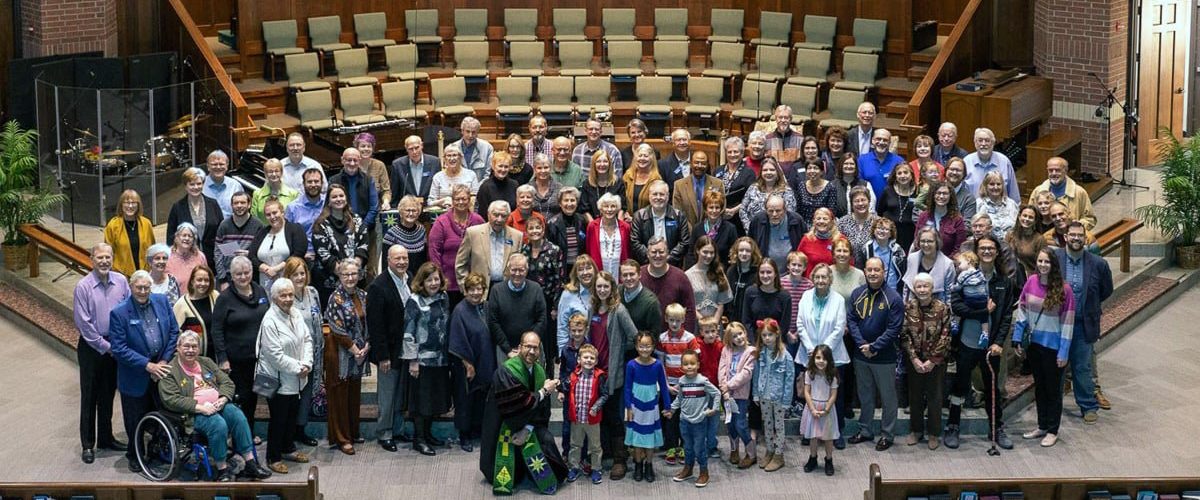When tiny but energetic Bartlett United Methodist Church in central Texas began to talk about the denomination’s split, member Tami Baker said she felt “a sense of dread and then grief as talk of the pending split increased.”
Further into the conversation, Baker said, she had a revelation: “As parents, we raise our children to think independently while trying to impart wisdom and encourage compassion. All too soon they leave home. They now must forge their own path while hopefully maintaining our basic lessons for being a good human. Sometimes they come back; sometimes they move parallel to us; and sometimes they seem to take sharp right turns or go in bizarre directions. We still love them.”
Bartlett UMC typically has fewer than 20 people in worship on Sunday in its town of 1,633 residents located about 55 miles northeast of Austin. Nonetheless, in keeping with Methodism’s founder John Wesley’s instruction to “do good,” the church tends to the needs of people in its surrounding area.
“We run a free clothes closet twice a month (three times when there’s a fifth Saturday) and also distribute furniture, food and kitchenware through the clothes closet and open it as needed in times of fire and flood,” Baker wrote. “We help distribute food to Bartlett residents provided by the Caring Place in Georgetown. We provide loaded backpacks for area children at the beginning of school and host a neighborhood Easter Egg hunt with crafts and story time.”
She added: “We may be mostly old, but we’ve got gumption.”
Baker’s views about the ongoing current of churches leaving the United Methodist denomination appear typical of how grassroots congregations are dealing with the split, according to reports in secular newspapers, from church members and from a church agency tasked with helping local churches.

Bartlett United Methodist Church has a small but vigorous congregation that serves its surrounding community, says member Tami Baker. (UM Insight Screenshot from Bartlett UMC website)
Feeling breakup effects anew
United Methodists throughout the United States are feeling anew the effects of the UMC’s breakup, no matter whether their congregations are voting to depart or stay. Late spring and early summer are known as “annual conference season” when regional bodies gather to review mission and ministry, renew acquaintances and receive yearly pastoral appointments made by bishops.
Late spring and early summer are known as “annual conference season.”
This year, conference sessions frequently include approvals of churches whose congregations have voted by two-thirds margins to leave the UMC over “reasons of conscience.” Those “reasons of conscience” typically involve disputes over the acceptance of LGBTQ persons — specifically the prospects of ordaining LGBTQ clergy or opening churches to allow same-sex weddings, both practices the UMC currently bans. Annual conferences must approve a local church’s exit in order for the church to claim its real and personal property.
Geography, demographics and theology also play big roles. A report by the Lewis Center for Church Leadership published in March showed the bulk of disaffiliating churches are in the South and Southwest and are predominantly white and rural. Departing churches’ subsequent affiliations run a gamut from joining the year-old conservative Global Methodist Church to moving into other Wesleyan denominations or becoming independent.
Because of the wave of conference disaffiliation approvals, the number of churches leaving the UMC has swelled recently. A sample gathered from secular news and church media shows the following departures:
- Great Plains (Kansas and Nebraska): 156 churches out of 905
- Louisiana: 95 churches out of 438
- Kentucky: 286 churches out of 655
- Michigan: 60 churches out of 730
- West Ohio: 172 out of 960
- South Carolina: 113 out of 958
An unofficial tally being kept by UM News showed a total of 4,814 churches approved for disaffiliation by annual conferences as of June 7. That number will rise as more annual conferences continue to approve exits through mid-July. The deadline for leaving under a current exit provision comes Dec. 31.
‘Stay UMC’
Churches that “Stay UMC,” as a popular loyalist slogan goes, sometimes are finding themselves disrupted by a human equivalent of “fruit-basket-turnover.” In regions such as North Carolina, Western Pennsylvania, Tennessee, Kentucky, West Ohio and parts of Texas, congregations are replicating a movement known as Lighthouse Churches. Congregations pledge to welcome all who wish to remain United Methodist when their home churches vote to disaffiliate.
Discipleship Ministries, the UMC agency responsible for helping local churches, has reinvigorated a 2010 course, “Launchpad,” designed to give churches some handles on how to proceed through the spiritual and emotional effects of “regrouping in the wake of disaffiliation.”
Starting July 20, the five-week online course will cover “all the seasons” of beginning a “new” church, which includes local congregations split by disaffiliation or new churches organized by those who want to stay United Methodist when their churches vote to leave.
Creative welcome
Even without a formal program to welcome orphaned members, United Methodist churches are finding ways to adapt to their changed circumstances, said Baker, the Central Texas church member.
“Most of those in my breakout group had experienced various effects of the split,” Baker said after attending an online meeting organized by the Fort Worth-based Central Texas Annual Conference.
“Some now have smaller congregations; some smaller groups have merged,” she said. “Some have kept with their own church but merged groups like (United) Methodist Men and mission work groups with neighboring churches.
“Some have experienced a revitalization of their church.” Baker continued. “Some have found new church homes via streaming services or church websites and other media (Facebook Live, You Tube, links in weekly newsletters, prayer groups on Zoom). Some smaller ‘remaining’ churches are gaining support from nearby larger churches, perhaps becoming mission churches affiliated with a larger church.”
Baker said as she reviewed her notes from the Central Texas online meeting, she realized churches are finding cohesiveness “in mission work, in being openly welcoming congregations, and in Bible and book studies offered in person or online. They join together with others, not limited to a single church.”
‘It’s about mission’
Sharon Coley, pastor of Pleasant Hill United Methodist Church-Summerville in the North Georgia Annual Conference, told the Atlanta Journal-Constitution: “Whatever happens or whoever remains, it’s about mission.” Summerville is in northwest Georgia, about 45 miles south of Chattanooga, Tenn.
“Whatever happens or whoever remains, it’s about mission.”
Coley said she discussed the UMC’s split with her congregants. “We don’t focus on the rhetoric. We don’t focus on the hatred. We’re focused on the mission.”
North Georgia Bishop Robin Dease recently confirmed the lifting of a moratorium on church disaffiliations after the conference lost two civil lawsuits filed by 187 churches seeking the right to leave.
In Amarillo, Texas, a city of about 200,000 residents, a new United Methodist church was chartered June 4 after the city teetered on the verge of having no UMCs because of the large number of disaffiliations in the Northwest Texas Annual Conference, reported Sam Hodges of UM News.
Amarillo United Methodist Church came about through the efforts of Margie McNeir, 83, a retired clergywoman who organized the new congregation made up of members whose churches voted to leave the UMC. McNeir is providing leadership for the new church until its appointed pastor, Robert Burke, assumes the pulpit at the end of June. Burke had been serving as pastor of Stratford (Texas) United Methodist Church, which chose to disaffiliate.
Looking for healing

Paul Graves
Paul R. Graves, a retired United Methodist clergyman in Sandpoint, Idaho, said he balances disaffiliation grief with some wisdom from his six decades of ministry. Sandpoint is a city of 9,000 residents about 46 miles north of Coeur d’Alene, Idaho.
“I found myself thinking of retired Bishop Cal McConnell,” said Graves, 95, who describes himself as “lead geezer-in-training” of a consulting and teaching ministry on aging issues.
“There is nothing wrong with the United Methodist Church that what’s right with the United Methodist Church can’t help heal.”
“When Cal was leading the Pacific Northwest Conference in the late ’80s to mid-’90s, I heard him say on many occasions, ‘There is nothing wrong with the United Methodist Church that what’s right with the United Methodist Church can’t help heal.'”
“There are many layers to that truism, but I’ve found it always a good place to return to,” Graves said.
Bartlett UMC member Tami Baker said she believes the denomination should change its Book of Discipline, the collection of church laws, so that LGBTQ persons can be married in United Methodist churches and that qualified LGBTQ persons may be ordained.
“For some, the controversy is an emotional drain, for some confounding, for some perplexing; for others it is just plain disappointing that so much time and energy are being spent on what shouldn’t even be an issue,” she said.
Cynthia B. Astle is a veteran religion journalist who has covered The United Methodist Church at all levels for 35 years. She serves as Editor of United Methodist Insight, an online journal she founded in 2011.


